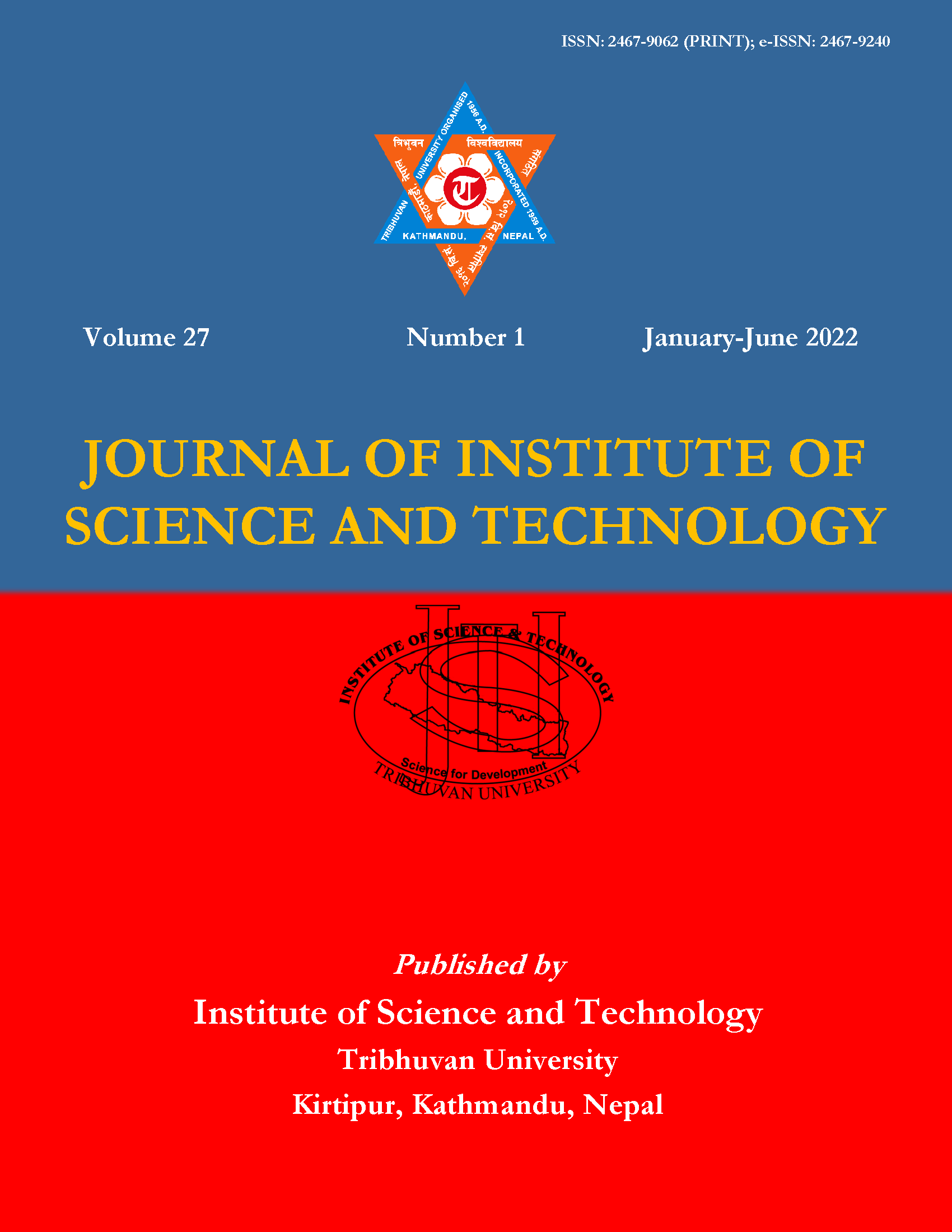Characterization of Essential Oil, Estimation of Phenolic and Flavonoid Content and Biological Activities of Ephedra pachyclada BOISS
DOI:
https://doi.org/10.3126/jist.v27i1.40590Keywords:
Antimicrobial activity, antioxidant activity, Ephedra pachyclada, Mustang districtAbstract
The northern areas of Nepal are rich in biodiversity and contain a large number of medicinal plant species including the Genus Ephedra of evergreen gymnosperm, belonging to the family Ephedraceae. The plants have been used by the peoples of the Himalayan region for the treatment of asthma, blood pressure, and gastritis for many years. This study was aimed for the evaluation of phytochemical, antioxidant, and antimicrobial activities of methanol, ethyl acetate, dichloromethane, and n-hexane extracts, and gas chromatography-mass spectrometry (GCMS) profiling of the essential oil of the aerial parts of Ephedra pachyclada Boiss from Mustang district of Nepal. Antioxidant activity was evaluated by 2,2-dipheny-1-picrylhydrazyl (DPPH) free radical scavenging assay and antimicrobial activity by the agar well diffusion method. Total phenolics and total flavonoid content were determined by Folin-Ciocalteu and aluminum chloride colorimetric method, respectively. The methanol extract contained the highest total phenolic content of 54.42 ± 1.40 mg GAE/g followed by the ethyl acetate (46.84 ± 0.62 mg GAE/g), DCM extract (19.58 ± 0.24 mg GAE/g), and the lowest TPC was shown for n-hexane extract (5.21 ± 1.40 mg GAE/g) of the dry weight. The methanol extract showed the maximum TFC of 33.28 ± 0.48 mg QE/g, followed by ethyl acetate extract (31.73 ± 0.52 mg QE/g), DCM extract (31.64 ± 0.56 mg QE/g), and the least value was obtained for the n-hexane extract (21.44 ± 2.91 mg QE/g). The methanol extract showed the highest antioxidant activity with a half-maximal inhibitory concentration (IC50) of 37.81 ± 2.24 μg/mL. The methanol extract showed potent activity against Escherichia coli (ATCC 25922), and Staphylococcus aureus (ATCC 25923) with zones of inhibition of 13 mm and 12 mm respectively. Ethyl acetate extract showed a slight potency against Staphylococcus aureus (ATCC 25923) with a zone of inhibition of 9 mm. The essential oil contained diisooctyl phthalate (46.90%), dodecane, 2,6,11-trimethyl-(16.35%), dodecane, 4,6-dimethyl- (11.59%), tetrapentacontane (11.56%), and myrtenol (4.37) as the major compounds. The plant exhibited significant antioxidant and antimicrobial activities which could be used as the source to isolate the active natural antioxidant and antimicrobial agent as the drug candidate in the future drug discovery process.
Downloads
Downloads
Published
How to Cite
Issue
Section
License
Copyright (c) 2022 Institute of Science and Technology, T.U.

This work is licensed under a Creative Commons Attribution-ShareAlike 4.0 International License.
The views and interpretations in this journal are those of the author(s). They are not attributable to the Institute of Science and Technology, T.U. and do not imply the expression of any opinion concerning the legal status of any country, territory, city, area of its authorities, or concerning the delimitation of its frontiers of boundaries.
The copyright of the articles is held by the Institute of Science and Technology, T.U.




